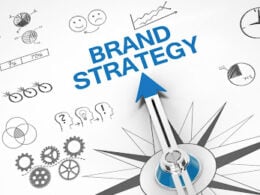Social media? Check. Paid Search? Check. Promotional Products?…….If you have never considered using promotional gifts as part of your marketing mix, then looking at the industry with a fresh approach might just provide an extra dimension to your advertising. There are many proven advantages to the use of branded gifts, many of which can help support and enhance existing marketing activity.
Brand Image and Awareness
Branded goods play a vital role in the creation and addition to a positive brand image, and make it highly recognisable – we only know and recognise logos because we are exposed to them to a high degree. The more we see a brand, the more we trust it as we assume it is well-known and therefore reputable. Once branding has been established, the use of promotional gifts can help to solidify this corporate identity, improving brand recall amongst existing or potential customers. Indeed, recent findings by the Promotional Products Association International (Nov 2012 study) show that 88% of people surveyed could name the advertiser on the promotional product they received.
Felxible and Versatile
Promotional gifts also have a great flexibility of use, not least as a result of the vast array of products available. Goods can be chosen and tailored to the intended recipient, ensuring high retention and memorability. From branding campaigns to loyalty schemes and corporate incentives, gifts can be selected to suit virtually any aim.
If branding is applied non-specifically i.e. without dates or reference to a particular event, bulk orders can be purchased (so reducing the cost per piece) and used over a long timescale.
An ROI to Compete with ATL Advertising
Recent BPMA research (Oct 2011 Survey) suggests that promotional products provide a better ROI than radio and outdoor advertising. With an average cost per impression of £0.03, investment in such goods can help achieve very specific marketing aims. In addition to the actual cost, promotional goods often carry a high perceived value in the eyes of any recipient. A gift is a gift, and the sentiment attached to this can greatly enhance a brands’ image.
A Marketing ‘Assist’
Used as a support tool for other marketing methods, promotional goods can significantly improve response rates. Sending out a direct mail campaign? The inclusion of a branded gift can improve responses by up to 50% (PPAI study). This can considerably improve the ROI from DM activity, even when factoring in the cost of the giveaways.
Equally, when used with social media campaigns, a branded incentive can help improve engagement rate. Promotional mugs, keyrings and t-shirts all work well as incentives for re-tweets or ‘follows’ – or as daily competition prizes. The icing on the cake is increased brand awareness.
Workplace Motivation
Aside from the benefits of handing out branded goods to customers, they also hold a value within the workforce. Employee reward schemes are proven to increase productivity and a positive outlook; a branded gift is a physical expression of thanks from an employer. Traditionally, this might be a plaque or a trophy for one or two best performing employees, but it could equally be a higher priced gift for your most improved sales performer. Luxury items such as an embossed leather bag or technology items work well for this type of activity – the more coveted the better.
Tactile, Memorable Advertising
Branded gifts are physical and tangible, and this is perhaps their greatest strength. A promotional gift attracts instant attention, as long as method of presentation is carefully considered. Rather than becoming desensitised to banner and radio advertising, the recipient of an actual physical item cannot help but notice it. It may be kept for months or even years, it may have a much shorter life. But nevertheless, it has been accepted, recognised, handled. These factors all contribute to brand recall. Items of daily use, such as mugs or calendars, will perpetuate this brand awareness over a long period of time, will be appreciated, and will allow your company details to not only be at hand when needed, but also enter the subconscious until a time when they are required to be remembered.
About the Author
Lorna Walkden is part of the marketing team at Ellenell, a promotional products company based in London. You can interact with me on twitter @Ellenellpromo






